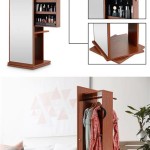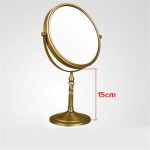How to Screen Mirror iPhone to Windows Laptop
Screen mirroring allows users to display the contents of an iPhone's screen onto a larger display, such as a Windows laptop. This functionality can be useful for presentations, sharing photos and videos with a larger group, or simply enjoying mobile content on a bigger screen. Several methods facilitate iPhone-to-Windows screen mirroring, each with its own set of advantages and limitations.
Using AirPlay with Third-Party Software
Apple's AirPlay technology enables wireless streaming of audio, video, and screen mirroring between Apple devices and compatible smart TVs. While AirPlay doesn't directly support Windows laptops, several third-party applications bridge this gap. These applications create an AirPlay receiver on the Windows laptop, allowing the iPhone to connect and mirror its display.
When selecting an AirPlay receiver application, users should consider factors such as ease of use, features, performance, and cost. Some popular options offer free trials or limited free versions, while others require a one-time purchase or subscription. It's essential to download these applications from reputable sources to avoid security risks.
Once the chosen application is installed and running on the Windows laptop, enabling screen mirroring from the iPhone typically involves opening the Control Center and selecting "Screen Mirroring." The laptop running the AirPlay receiver software should appear in the list of available devices. Selecting the laptop initiates the mirroring process.
Utilizing the Built-in Camera App
For scenarios where mirroring the entire screen isn't necessary, and the primary goal is sharing content from the iPhone's camera, using the built-in Camera app on the Windows laptop can be a simple solution. This method involves connecting the iPhone to the laptop via a USB cable and selecting the iPhone as the camera source within the Camera app.
This method offers a direct connection and avoids potential latency issues associated with wireless mirroring. However, it is limited to displaying the live camera feed and doesn't allow for mirroring other applications or the entire iPhone interface.
Connecting through a Wired Connection with Third-Party Software
Some third-party applications offer wired screen mirroring solutions by leveraging the USB connection between the iPhone and Windows laptop. This approach can provide a more stable and reliable connection than wireless mirroring, especially in environments with fluctuating network conditions.
Similar to AirPlay receiver applications, wired mirroring software often comes with varying features and pricing models. A wired connection through reputable software can be beneficial for situations requiring consistent, high-quality mirroring, such as presentations or demonstrations.
Employing Microsoft's "Your Phone" App
Windows 10 and 11 include a built-in application called "Your Phone" that allows users to link their Android and iOS devices to their computers. While offering limited screen mirroring capabilities for iOS devices compared to Android, it can still be useful for specific tasks.
"Your Phone" allows users to view and interact with recent photos, send and receive text messages, and manage notifications directly from their Windows laptop. While it doesn't offer full screen mirroring for iOS, it provides a convenient way to access certain phone features on the larger screen.
Leveraging Screen Recording Feature and VLC Media Player
Another approach involves utilizing the iPhone's screen recording feature in conjunction with VLC media player on the Windows laptop. This method requires initiating a screen recording on the iPhone and then transferring the recorded video file to the laptop for playback in VLC or other compatible media players.
This method isn't real-time mirroring but can be suitable for sharing recorded demonstrations or presentations. It's useful when live interaction with the iPhone's display isn't required.
Choosing the Right Mirroring Solution
The optimal screen mirroring method depends on individual needs and the specific context. Factors to consider include the nature of the content being mirrored, the required level of interactivity, the importance of latency, and the availability of necessary software or hardware.
Users should evaluate the advantages and limitations of each method before selecting the most suitable solution for their specific requirements.
Troubleshooting Common Mirroring Issues
Occasionally, users may encounter issues during the screen mirroring process. Common problems include connection failures, latency, and poor video quality. Troubleshooting steps can include verifying network connectivity, restarting devices, updating software, and ensuring compatibility between the chosen mirroring method and the devices involved.
Checking for updated drivers and firmware for network adapters and other related hardware can also help resolve connectivity problems.

How To Mirror Iphone Windows Pc Laptop Mac Full Guide

How To Mirror Your Iphone Screen On A Computer Pcmag

How To Screen Mirroring Iphone 6 Pc

How To Mirror Iphone Display Mac Or Pc Free Easy

How To Mirror Iphone Windows 10

5 Minutes Screen Mirroring Iphone Ipad To Pc In 2024

How To Mirror Iphone Windows Pc Laptop Mac Full Guide

How To Mirror Your Iphone Screen On A Computer Pcmag

Best Ways To Mirror Iphone Pc Via Usb Without Wifi

How To Screen Mirror Your Iphone A Windows Pc








